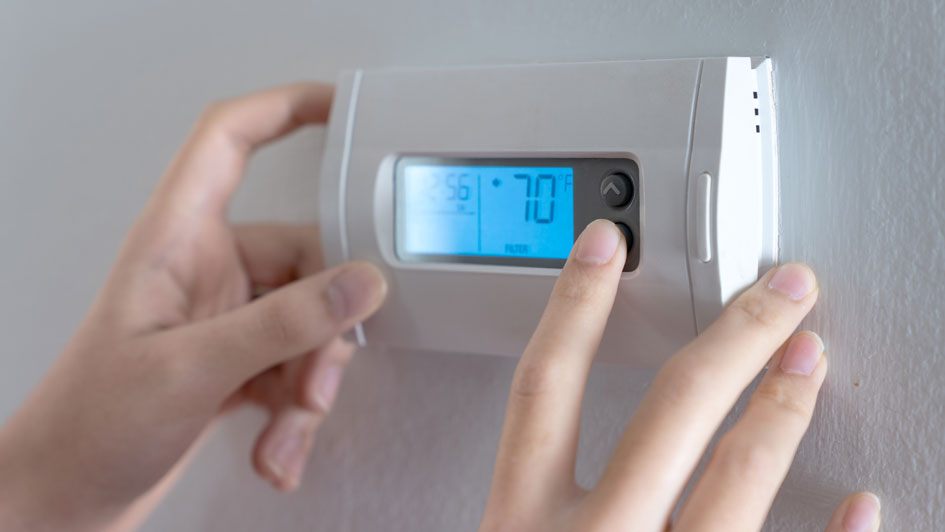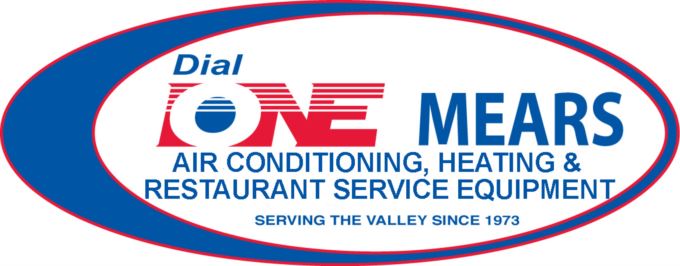
We all like saving money on our monthly utility bills, but it just so happens there’s a way to do it when you aren’t even home.
The key is your thermostat. By making the most out of your thermostat, you can tailor the temperature to your needs. That means you can have different temperature settings for when you’re home, away or even when you’re asleep.
If you're willing to make these adjustments, you can enjoy comfy temperatures while also keeping more of your money. Take a look at a few ways your thermostat doesn't have to use up all your summer spending money:
While at Home
Pretty much whenever you're home, you want comfortable temperatures. That’s why it’s best to set your thermostat lower in the summer if you're indoors to make the most of the cool air.
But the most energy-efficient temperatures for when you're in your home during the summer is usually between 78 and 80 degrees Fahrenheit. By adjusting things a few degrees, you'll avoid the worst of summer while keeping your energy bill more manageable.
While Away
When setting the temperature for a vacation or other trip away from the house, the majority of homeowners will set the thermostat higher than normal.
If your home is located somewhere a little cooler, you can set the thermostat to temperatures as high as 88 degrees while no one is home before you adjust it back to the sweet spot of 78-80 degrees once you're home again. This way, your air conditioning unit won’t be working overtime to cool an empty house.
While Sleeping
To enjoy a good night's sleep during the summer, you want your thermostat set at a comfortable temperature. A good rule of thumb is between 68-72 degrees Fahrenheit. You won't have to worry about getting too hot or too cold at some point overnight.
Other Ways to Use Less Energy:
- Smart thermostat installation: Using a smart thermostat in the summer is an excellent way to reduce energy costs since it can plan your temperature adjustments according to your lifestyle and idea of what comfortable is. A smart thermostat manages the temperature if you are home or sleeping, while allowing it to get warmer when no one is around. Using reputed brands and models such as the Lennox iComfort, you are able to adjust settings and schedules through your smartphone, tablet or laptop. Planning smart thermostat installation in your Phoenix home can be the simplest strategy for maintaining comfortable, yet energy-efficient temperatures whether you're at home or across the country.
- Replace current equipment with a newer HVAC system: Upgrading your HVAC system saves money right from the start. If a system boasts high energy efficiency, lower utility bills won't be far behind since it requires less energy to achieve comfortable temperatures. Air conditioning installation in Phoenix is a great way to beat the heat in the summer.
- Schedule annual AC maintenance: Hiring a skilled professional to perform regular air conditioning maintenance in Phoenix can have a serious effect on your total monthly energy use. With regular cleaning of the coils, checking for damage and keeping vents clear of dust and debris, this can help your HVAC system perform better during day-to-day use.. Increasing efficiency also limits strain on important or delicate components and lowers operational costs, lowering total energy use and eventually the total monthly bill.
- Replace your air filter regularly: Regularly changing the air filters in your HVAC system saves money by keeping airflow as smooth and consistent as possible. When filters become clogged, an AC unit has to work harder, and the added strain may impact the system’s life span and cause breakdowns.
- Confirm your attic is sufficiently insulated: Insulation is a vital part of maintaining an energy-efficient home, securing the hot air outside and the cool air inside during the summer. The North American Insulation Manufacturers Association (NAIMA) offers an official recommendation stating homeowners in souther states should possess at least 13-14 inches of insulation, while colder climates do better with 16-18 inches.
- Inspect your air ducts: Damage to the ventilation is capable of increasing your energy bills much more than 20 percent, plus it can affect equipment such as your water heater, clothes dryer and other appliances throughout your home. Checking your ductwork for leaks and sealing them can fix both of those problems.
- Seal all other leaky spots in your home: Sealing leaky spots in your home with caulk, foam sealant or weather-stripping can help keep it cooler on hot summer days. Don't forget to check for any gaps around windows, doors and even outdoor fixtures. Making time to seal leaks now can help you save a lot in the long term.
